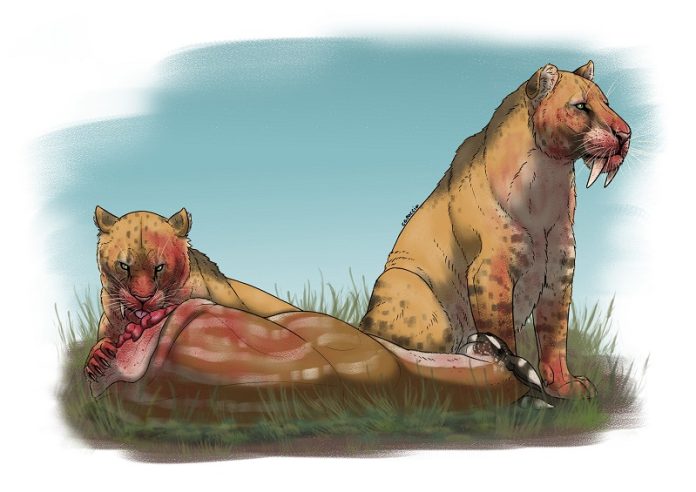
New research from scientists in Brazil is shedding light on the long-standing mystery of why saber-toothed tigers went extinct.
According to two new studies from the State University of Campinas (UNICAMP), the answer may lie in the complex relationship between predators and their prey over millions of years.
Saber-toothed tigers, known for their huge, curved canine teeth, were once fearsome predators of large animals across North America and Eurasia.
For years, scientists believed their extinction was linked to the disappearance of megafauna—giant animals like mammoths—about 11,000 years ago at the end of the Ice Age.
Climate changes and human hunting likely wiped out those animals, leaving predators like saber-toothed cats without enough food.
But João Nascimento, lead author of the studies, and his team discovered that the decline of these predators began much earlier—millions of years before the final extinction.
By analyzing fossil records, animal body sizes, and climate data from the past 20 million years, the researchers showed that saber-toothed cats started disappearing during periods when prey diversity was low. In short, when there were fewer types of prey animals around, more saber-toothed species vanished.
In a second study, the researchers looked at the other side of the equation: how changes in predator populations affected prey animals.
They focused on a group of herbivores called antilocaprids, which were once a diverse group of animals in North America. Today, only one species survives—the pronghorn, famous for being one of the fastest animals in the world.
Six million years ago, a key subfamily of antilocaprids, the Merycodontinae, went extinct around the same time modern elephants (proboscids) arrived in North America. These newcomers likely competed with Merycodontinae for forest habitats.
Meanwhile, the other subfamily, Antilocaprinae, began to decline as predator species—especially fast-running cats like the American cheetah—began to increase. These predators may have shaped the evolution of the pronghorn’s incredible speed.
According to the researchers, these patterns show that predator-prey relationships don’t just affect survival in the short term. They can have lasting effects on evolution across millions of years. For instance, the expansion of open, grassy environments favored grazing animals and hurt those that depended on forests. With fewer forest-dwelling animals available as prey, saber-toothed cats had a harder time surviving.
While the studies didn’t find a direct link between climate change and the extinction of saber-toothed cats, environmental shifts clearly played a role in shaping ecosystems and reducing prey populations—leading to a chain reaction that affected predators as well.
The research highlights how delicate ecological balances can shape the history of life on Earth. Professor Mathias Pires, who supervised the studies, warns that today’s human-driven extinctions could set off similar patterns in the future.
Understanding how past predator-prey relationships led to extinctions may help us better protect endangered species and ecosystems today.



